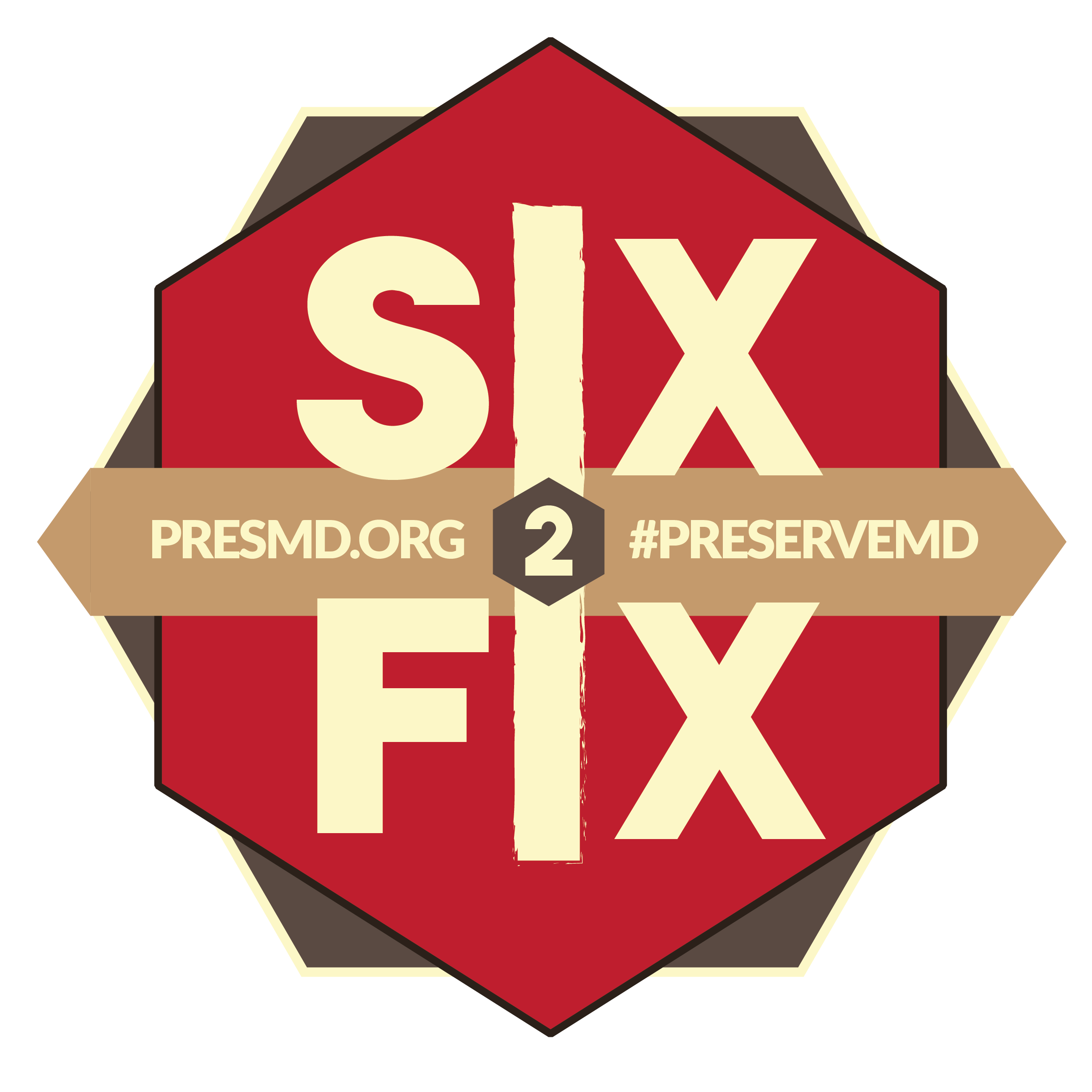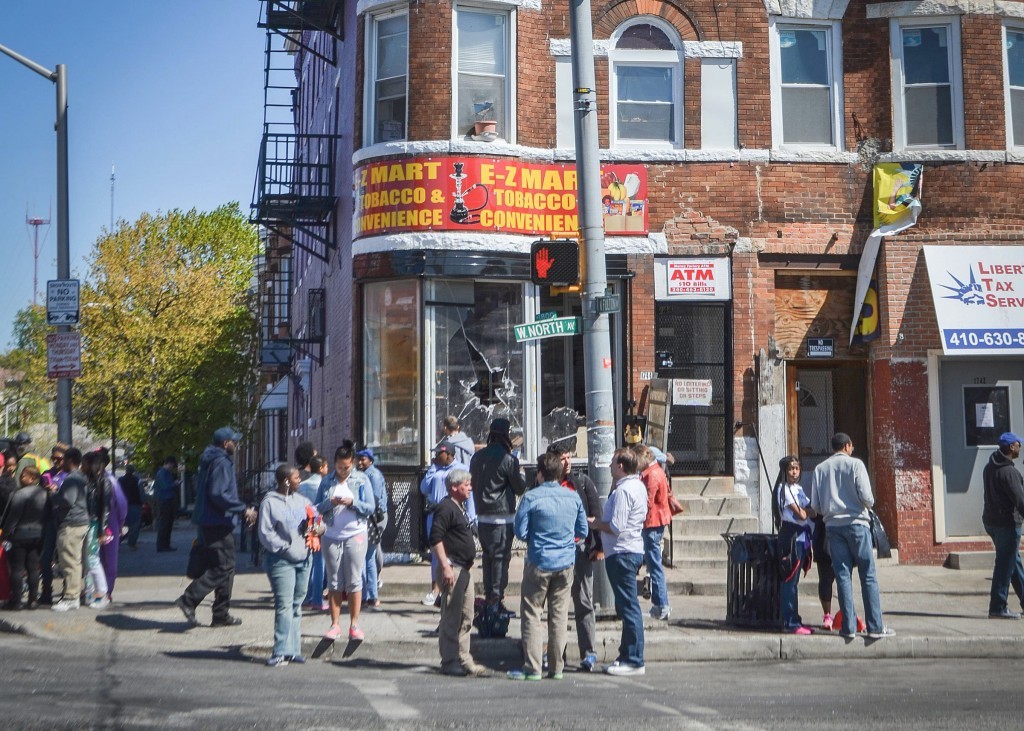Baltimore’s Historic Storefronts
After protests damaged dozens of storefronts in a historic African American commercial corridor, Preservation Maryland and partners advocated for funding to repair the physical wounds and offered professional documentation services prior to restoration work that will be done in a historically-sensitive manner.

THE PROBLEM
In Spring 2015, the City of Baltimore experienced protests in response to the death of Freddie Gray in a historically-African American commercial district that caused damage to dozens of storefronts. Without assistance, these storefronts remain in their damaged state and contribute to the real and perceived state of abandonment and decay in their respective neighborhoods. The State of Maryland has programs to help the businesses behind these facades restock their shelves and make up for lost revenue. Until now, there has not been a program to repair the historic buildings themselves.
THE FIX
In November 2015, the Hogan Administration made the decision to fund a $650,000 large-scale facade improvement program for Baltimore’s historic storefronts – a result of intense advocacy by Preservation Maryland and our partners. Applications were accepted in December 2015, selected in April 16, and documented in October 2016 with work starting in early 2017. Our role is to bring attention to this positive development and to advocate for continued funding for preservation from the state.

HISTORY
In April 2015, approximately 40 storefronts were damaged during the unrest in Baltimore following the death of Freddie Gray. These storefronts are largely within designated historic districts, mostly in West Baltimore’s Sandtown Winchester neighborhood, part of the Old West Baltimore National Register historic district. Other storefronts were damaged in Baltimore’s Highlandtown Historic District in East Baltimore and Upton’s Marble Hill local historic district in West Baltimore. The storefronts are predominantly part of corner rowhouses that were converted into stores decades ago.
THE FIX
During the unrest in the spring of 2015, approximately 40 historic storefronts were damaged by vandals. Without assistance, these storefronts remain in their damaged state and contribute to the real and perceived state of abandonment and decay in their respective neighborhoods. The State of Maryland has programs to help the businesses behind these facades restock their shelves and make up for lost revenue. Until now, there has not been a program to repair the historic buildings themselves.
SIGNIFICANCE
Corner stores and their facades are a central part of Sandtown Winchester and other historic communities in Baltimore. For generations, they have anchored intersections in these neighborhoods, served as meeting points, and provided needed goods and services to the community. The storefronts are largely part of buildings that contribute to the National Register of Historic Places within their respective neighborhoods. They are a core part of the urban fabric in their communities.
GOALS
Property owners, neighborhood residents, state officials and non-profits throughout Baltimore all share a common goal when it comes to Baltimore City. We want to see the city grow and develop and be the best place if can be for all of its residents. With that in mind, Governor Hogan announced in November 2015 that $650,000 would be made available through a grant program administered through the Department of Housing and Community Development to help property owners rehabilitate their storefronts and make the exterior better reflect the important roles these businesses play in their community. According to DHCD “The façade improvement program will: enhance the visual appeal and marketability of small businesses and commercial districts, provide access to architectural design assistance that will assist property owners with enhancing historic features and aesthetic appeal of commercial buildings and offer workforce development opportunities in the construction industry for under-employed Baltimore City residents.”
Updates
MAY 2019
The successful results of the collective efforts to repair and reinvigorate Baltimore’s historic storefronts were covered by AIA National’s Blueprint for Better interactive campaign website.
NOVEMBER 2016
The Maryland Department of Housing and Community Development has reported that several of the storefront improvement program have been completed, including: 407 W. Franklin Street, 2021 W. Pratt Street, and several storefronts along Pennsylvania Avenue.
OCTOBER 2016
Preservation Maryland garnered a team of preservationists to complete baseline photographic documentation for the Baltimore Department of Housing and Community Development of the current condition of the two dozen storefronts before repair and rehabilitation work will take place.
RESOURCES
The Westside Baltimore, Maryland
Urban Land Institute
Preservation Brief #11: Rehabilitating Historic Storefronts
National Park Service
What difference can a few stores make? Retail and Neighborhood Revitalization
Center for Community Innovation
Façade Improvement Programs can benefit your Community
PlannersWeb
NEWS
05/19
Communities and designers team up to revive storefronts across the US
AIA National, Blueprint for Better
04/01/19
Reinvesting in Baltimore
Architect Magazine
04/27/16
State awarded $650,000 for Baltimore storefront improvements
The Baltimore Sun
07/23/15
53 businesses and building owners damaged by riots receive city loans
Baltimore Brew
Can we count on you?
Preservation Maryland isn’t just preserving the past – we’re investing in our future. In just the past year we’ve invested heavily in our work and refused to accept the mounting challenges as a reason to retreat or hold our position. You are making it all possible.
